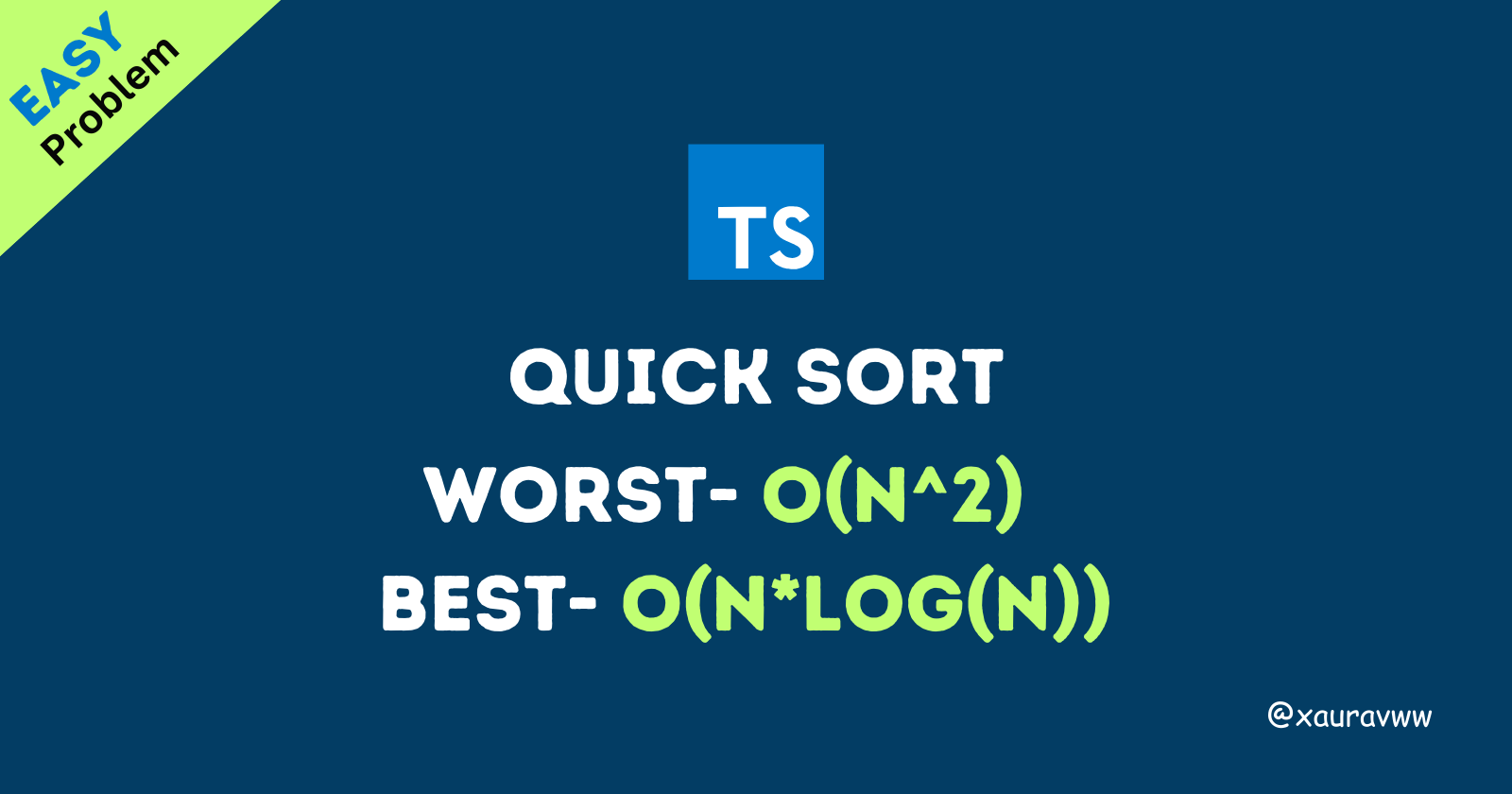Mastering Quicksort: Step-by-Step Breakdown
 Saurav Maheshwari
Saurav Maheshwari
Quicksort is a divide-and-conquer algorithm that works by selecting a "pivot" element from the array and partitioning the other elements into two sub-arrays according to whether they are less than or greater than the pivot. The sub-arrays are then sorted recursively.
Quicksort is not a stable sorting algorithm in its standard form. Stability in sorting means that equal elements retain their relative order from the original list after sorting.
Basic Steps of Quicksort:
Choose a Pivot: Select an element from the array as the pivot.
Partitioning: Rearrange the elements in the array so that all elements less than the pivot come before it, and all elements greater than the pivot come after it.
Recursion: Recursively apply the above steps to the sub-arrays formed by dividing at the pivot.
Implementation
function quickSort(nums: number[], s: number, e: number):void {
if (s >= e) return;
let pivot = nums[e];
let left = s;
for (let i = s; i < e; i++) {
if (nums[i] <= pivot) {
[nums[left], nums[i]] = [nums[i], nums[left]];
left++;
}
}
//swapping left and end index values
[nums[left], nums[e]] = [nums[e], nums[left]];
quickSort(nums, s, left - 1);
quickSort(nums, left + 1, e);
}
function sortArray(nums: number[]): number[] {
quickSort(nums, 0, nums.length - 1);
return nums;
}
How It Works:
Pivot Selection: In this basic version, the pivot is selected as the last element of the array.
Partitioning: Elements less than or equal to the pivot are moved to the left, and those greater than the pivot are moved to the right.
Recursive Sorting: The algorithm then recursively sorts the sub-arrays.
Time Complexity of Quicksort
Quicksort's time complexity depends on the pivot selection and how balanced the partitioning is during each recursive call:
We have to traverse n items, and for recursion, if the array is divided in half, we get log(n) levels. Otherwise, we still have to traverse n levels.
Best Case: when the pivot recursively divides the array into two nearly equal halves.
$$O(nlogn)$$
Average Case: when the pivot generally creates balanced partitions.
$$O(nlogn)$$
Worst Case: when the pivot results in highly unbalanced partitions, such as in already sorted arrays or duplicate values.
$$O(n^2)$$
Comment if I have committed any mistake. Let's connect on my socials. I am always open for new opportunities , if I am free :P
Subscribe to my newsletter
Read articles from Saurav Maheshwari directly inside your inbox. Subscribe to the newsletter, and don't miss out.
Written by
